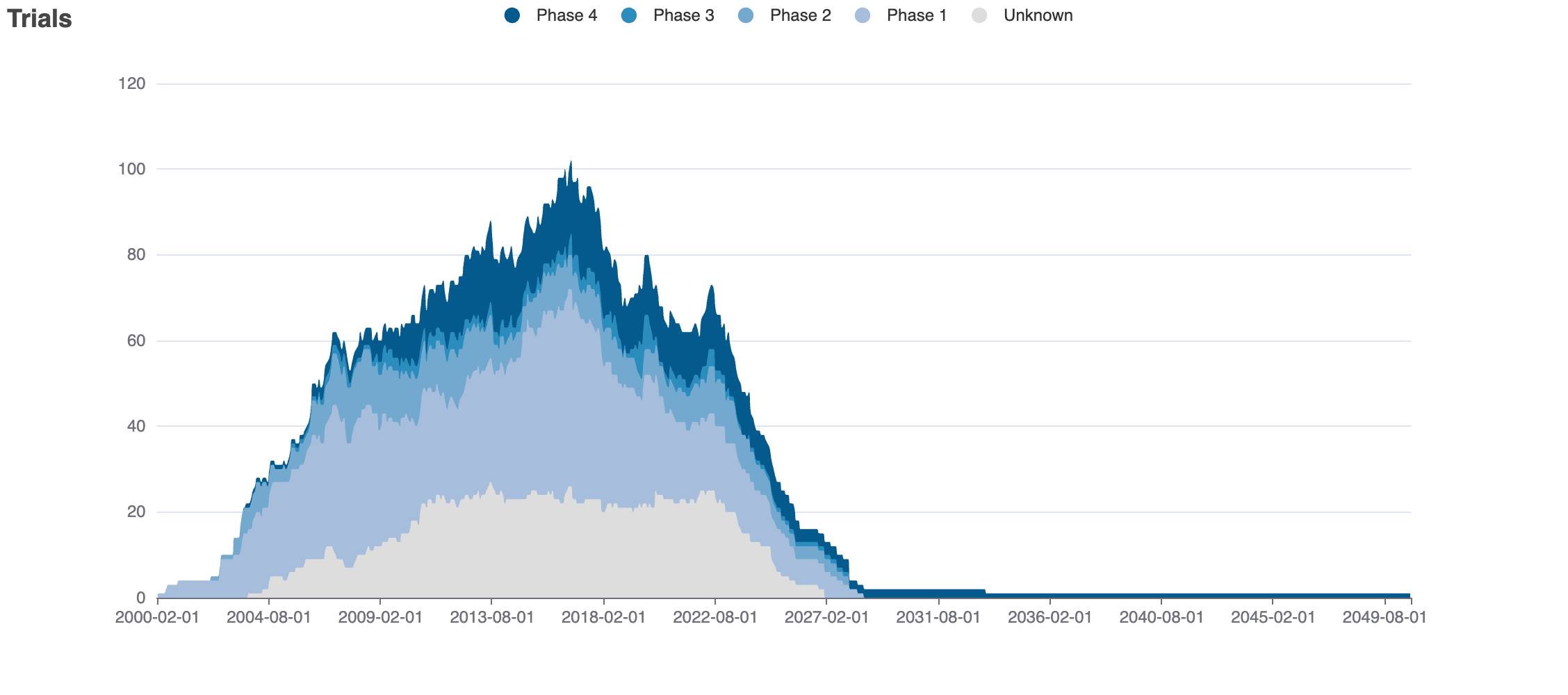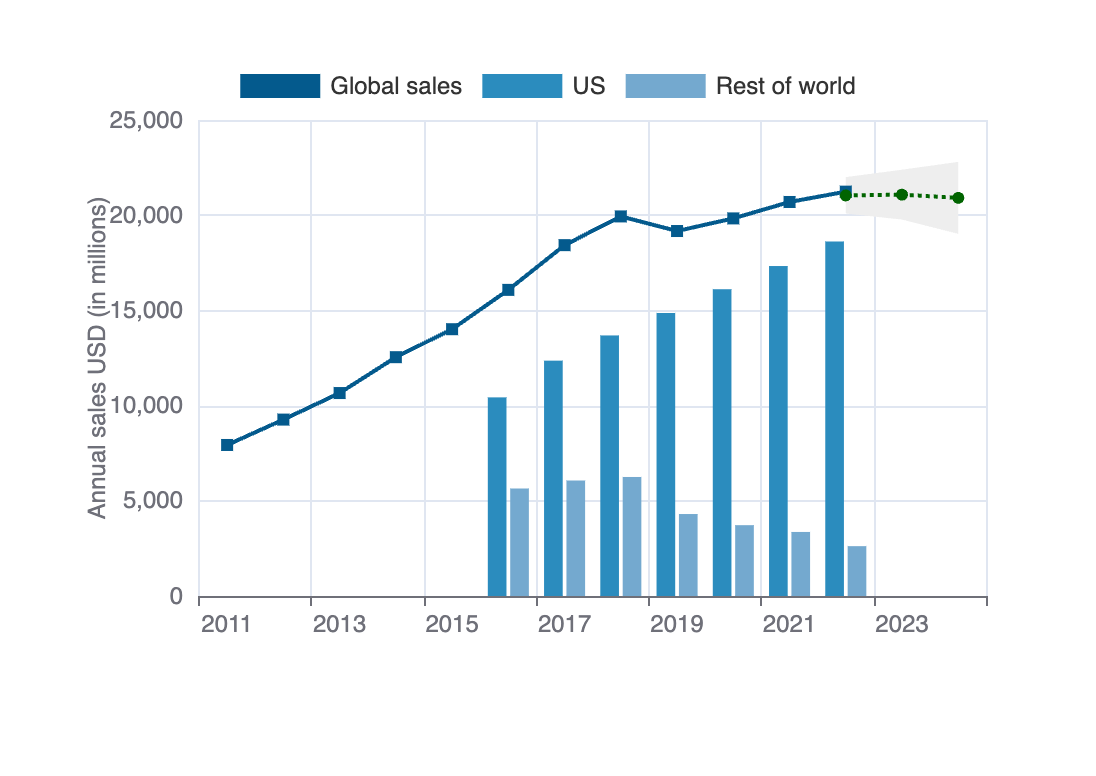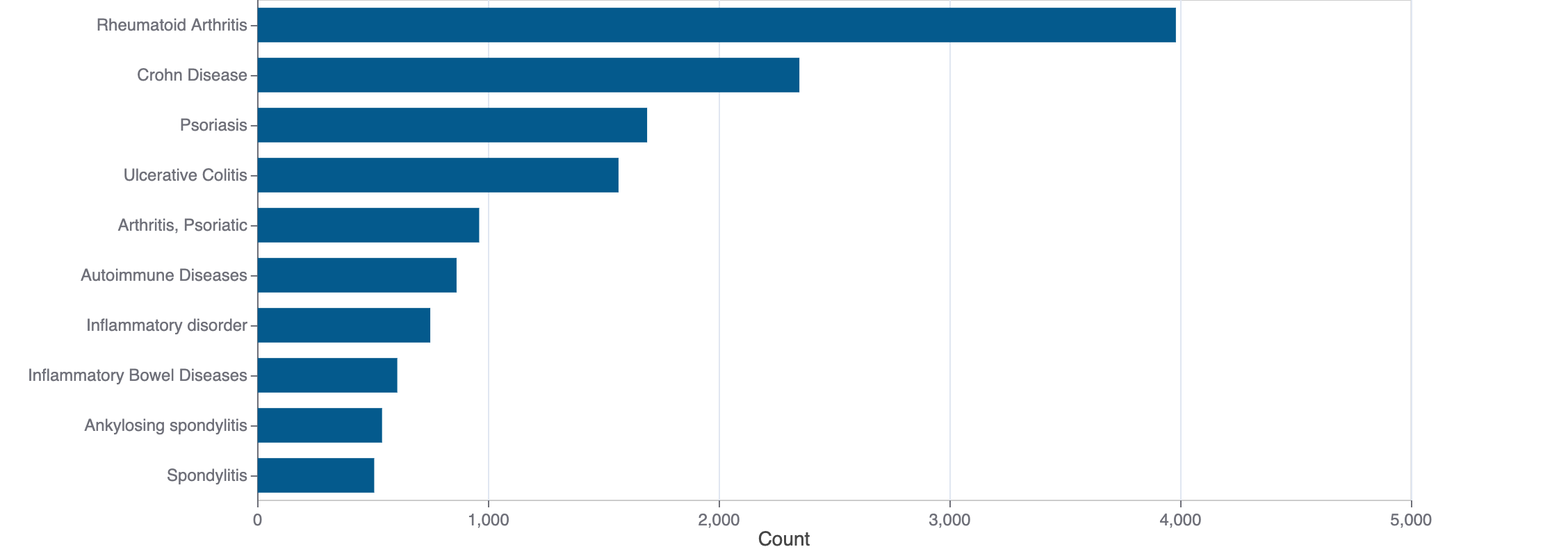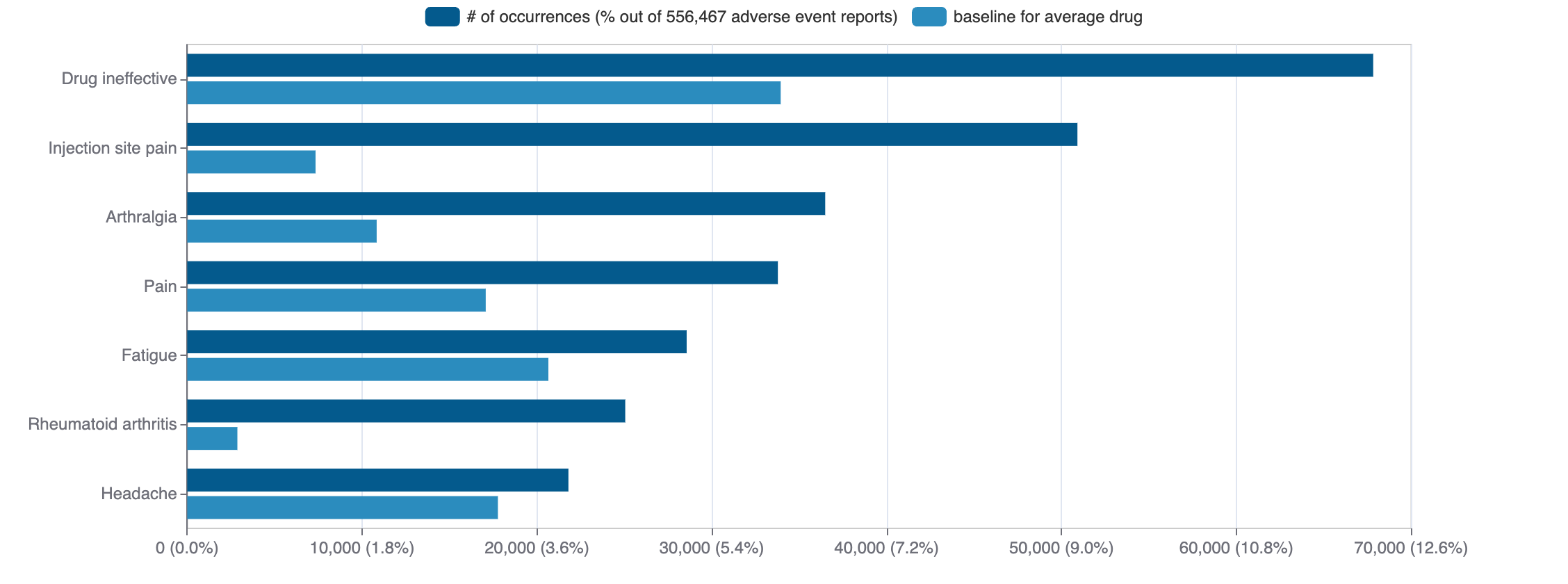Dronabinol
Marinol, Syndros (dronabinol) is a small molecule pharmaceutical. Dronabinol was first approved as Marinol on 1985-05-31. It is used to treat anorexia, nausea, and vomiting in the USA. The pharmaceutical is active against cannabinoid receptor 1. In addition, it is known to target transient receptor potential cation channel subfamily A member 1, glycine receptor subunit alpha-2, N-arachidonyl glycine receptor, transient receptor potential cation channel subfamily M member 8, G-protein coupled receptor 55, glycine receptor subunit alpha-1, glycine receptor subunit alpha-3, cannabinoid receptor 2, and transient receptor potential cation channel subfamily V member 2.
Download report
Favorite
Commercial
Therapeutic Areas
Therapeutic Area | MeSH |
|---|---|
| signs and symptoms pathological conditions | D013568 |
Trade Name
FDA
EMA
Marinol, Syndros (generic drugs available since 2008-06-27)
Drug Products
FDA
EMA
New Drug Application (NDA)
New Drug Application (NDA)
Abbreviated New Drug Application (ANDA)
Abbreviated New Drug Application (ANDA)
Labels
FDA
EMA
Brand Name | Status | Last Update |
|---|---|---|
| dronabinol | NDA authorized generic | 2023-03-30 |
| marinol | New Drug Application | 2021-03-28 |
| syndros | New Drug Application | 2021-01-21 |
Indications
FDA
EMA
Indication | Ontology | MeSH | ICD-10 |
|---|---|---|---|
| anorexia | HP_0002039 | D000855 | R63.0 |
| nausea | HP_0002018 | D009325 | R11.0 |
| vomiting | HP_0002013 | D014839 | R11.1 |
Agency Specific
FDA
EMA
No data
HCPCS
Code | Description |
|---|---|
| Q0167 | Dronabinol, 2.5 mg, oral, fda approved prescription anti-emetic, for use as a complete therapeutic substitute for an iv anti-emetic at the time of chemotherapy treatment, not to exceed a 48 hour dosage regimen |
Clinical
Clinical Trials
19 clinical trials
View more details

Mock data
Subscribe for the real data
Subscribe for the real data
Indications Phases 4
Indication | MeSH | Ontology | ICD-10 | Ph 1 | Ph 2 | Ph 3 | Ph 4 | Other | Total |
|---|---|---|---|---|---|---|---|---|---|
| Secondary hyperparathyroidism | D006962 | EFO_1001173 | 1 | — | 1 | 7 | — | 9 | |
| Chronic renal insufficiency | D051436 | N18 | 1 | — | 1 | 4 | — | 6 | |
| Chronic kidney failure | D007676 | EFO_0003884 | N18.6 | 1 | — | — | 1 | — | 2 |
| Kidney transplantation | D016030 | — | — | — | 1 | — | 1 | ||
| Renal insufficiency | D051437 | HP_0000083 | N19 | — | — | — | 1 | — | 1 |
Indications Phases 3
Indication | MeSH | Ontology | ICD-10 | Ph 1 | Ph 2 | Ph 3 | Ph 4 | Other | Total |
|---|---|---|---|---|---|---|---|---|---|
| Vitamin d deficiency | D014808 | EFO_0003762 | E55 | — | — | 1 | — | — | 1 |
Indications Without Phase
Indication | MeSH | Ontology | ICD-10 | Ph 1 | Ph 2 | Ph 3 | Ph 4 | Other | Total |
|---|---|---|---|---|---|---|---|---|---|
| Chronic kidney disease-mineral and bone disorder | D012080 | EFO_1001152 | N25.0 | — | — | — | — | 1 | 1 |
Epidemiology
Epidemiological information for investigational and approved indications
View more details
Drug
General
| Drug common name | DRONABINOL |
| INN | dronabinol |
| Description | Delta(9)-tetrahydrocannabinol is a diterpenoid that is 6a,7,8,10a-tetrahydro-6H-benzo[c]chromene substituted at position 1 by a hydroxy group, positions 6, 6 and 9 by methyl groups and at position 3 by a pentyl group. The principal psychoactive constituent of the cannabis plant, it is used for treatment of anorexia associated with AIDS as well as nausea and vomiting associated with cancer chemotherapy. It has a role as a metabolite, a non-narcotic analgesic, a hallucinogen, a cannabinoid receptor agonist and an epitope. It is a diterpenoid, a benzochromene, a polyketide and a phytocannabinoid. |
| Classification | Small molecule |
| Drug class | cannabinol derivatives |
| Image (chem structure or protein) | |
| Structure (InChI/SMILES or Protein Sequence) | CCCCCc1cc(O)c2c(c1)OC(C)(C)[C@@H]1CCC(C)=C[C@@H]21 |
Target
Alternate
TRPA1
TRPA1
GLRA2
GLRA2
GPR18
GPR18
TRPM8
TRPM8
GPR55
GPR55
GLRA1
GLRA1
GLRA3
GLRA3
CNR2
CNR2
TRPV2
TRPV2
Organism
Homo sapiens
Gene name
TRPA1
Gene synonyms
ANKTM1
NCBI Gene ID
Protein name
transient receptor potential cation channel subfamily A member 1
Protein synonyms
ankyrin-like with transmembrane domains 1, Ankyrin-like with transmembrane domains protein 1, p120, Transformation-sensitive protein p120, Wasabi receptor
Uniprot ID
Mouse ortholog
Trpa1 (277328)
transient receptor potential cation channel subfamily A member 1 (Q8BLA8)
Variants
Clinical Variant
No data
Financial
Dronabinol - Insys Therapeutics, Inc.
$
€
£
₣

Mock data
Subscribe for the real data
Subscribe for the real data

Mock data
Subscribe for the real data
Subscribe for the real data
Syndros - Insys Therapeutics, Inc.
$
€
£
₣

Mock data
Subscribe for the real data
Subscribe for the real data

Mock data
Subscribe for the real data
Subscribe for the real data
Tabular view
Trends
PubMed Central
Top Terms for Disease or Syndrome:

Mock data
Subscribe for the real data
Subscribe for the real data
Additional graphs summarizing 3,754 documents
View more details
Safety
Black-box Warning
No Black-box warning
Adverse Events
Top Adverse Reactions

Mock data
Subscribe for the real data
Subscribe for the real data
429 adverse events reported
View more details
Premium feature
Learn more about premium features at pharmakb.com
Learn more
